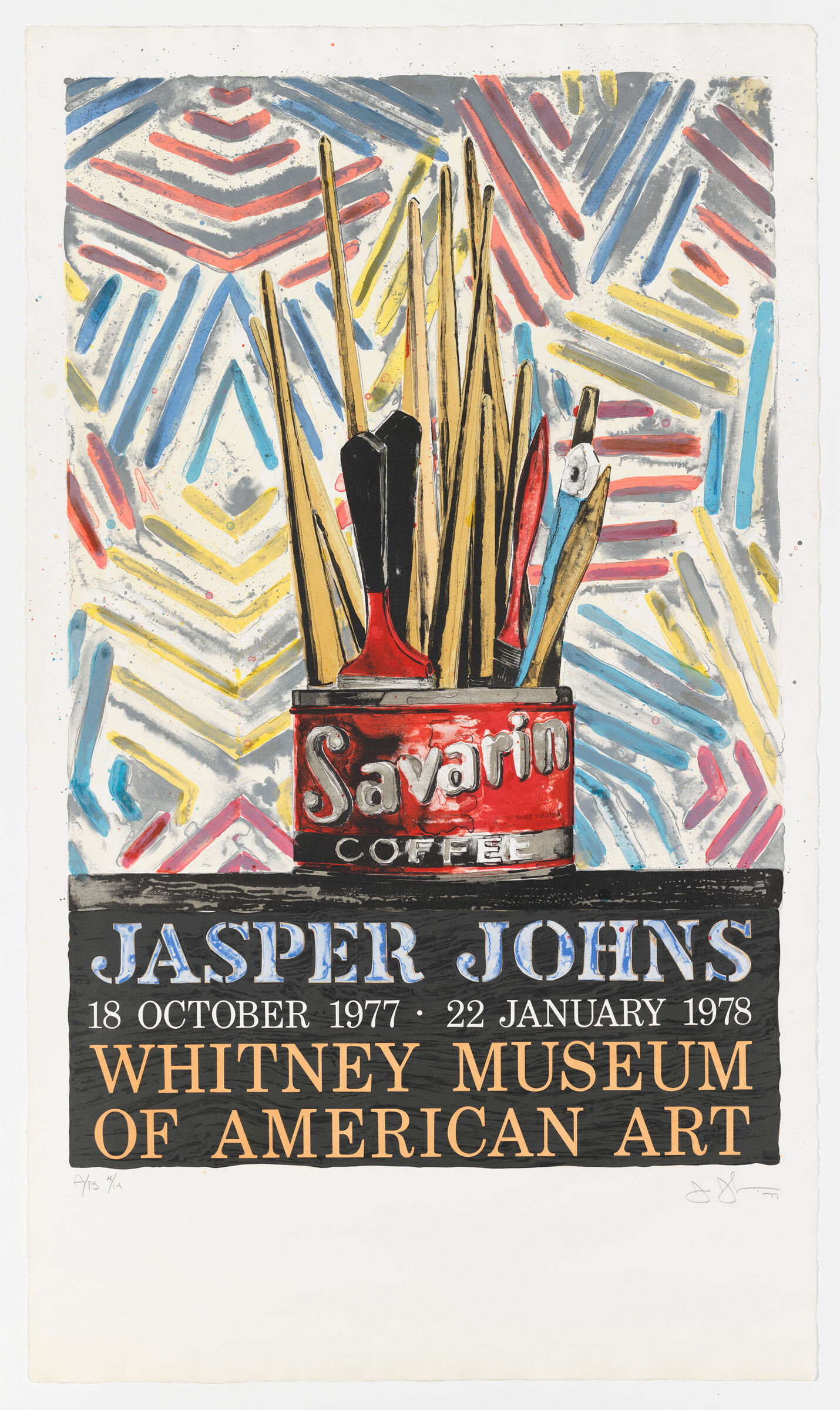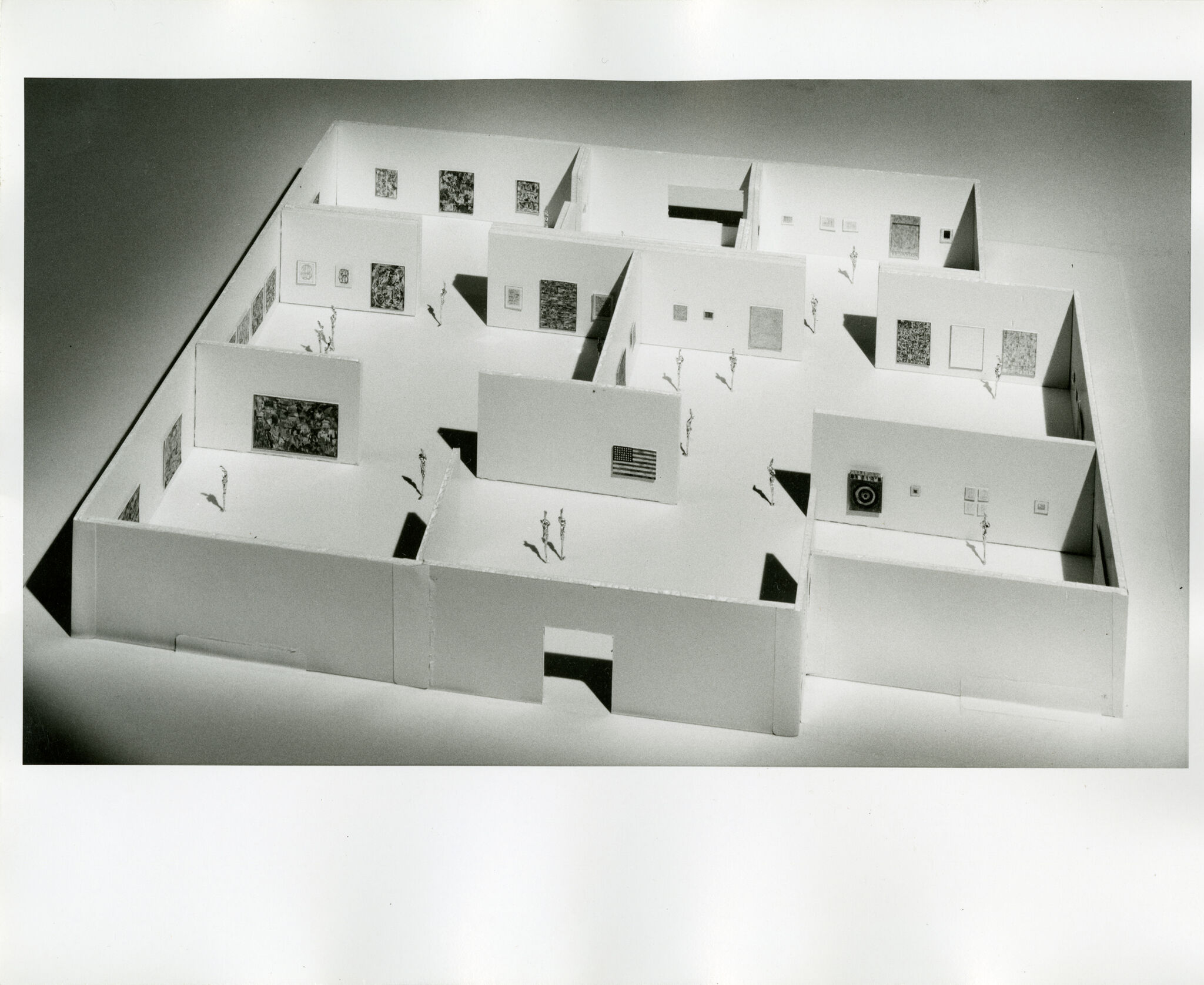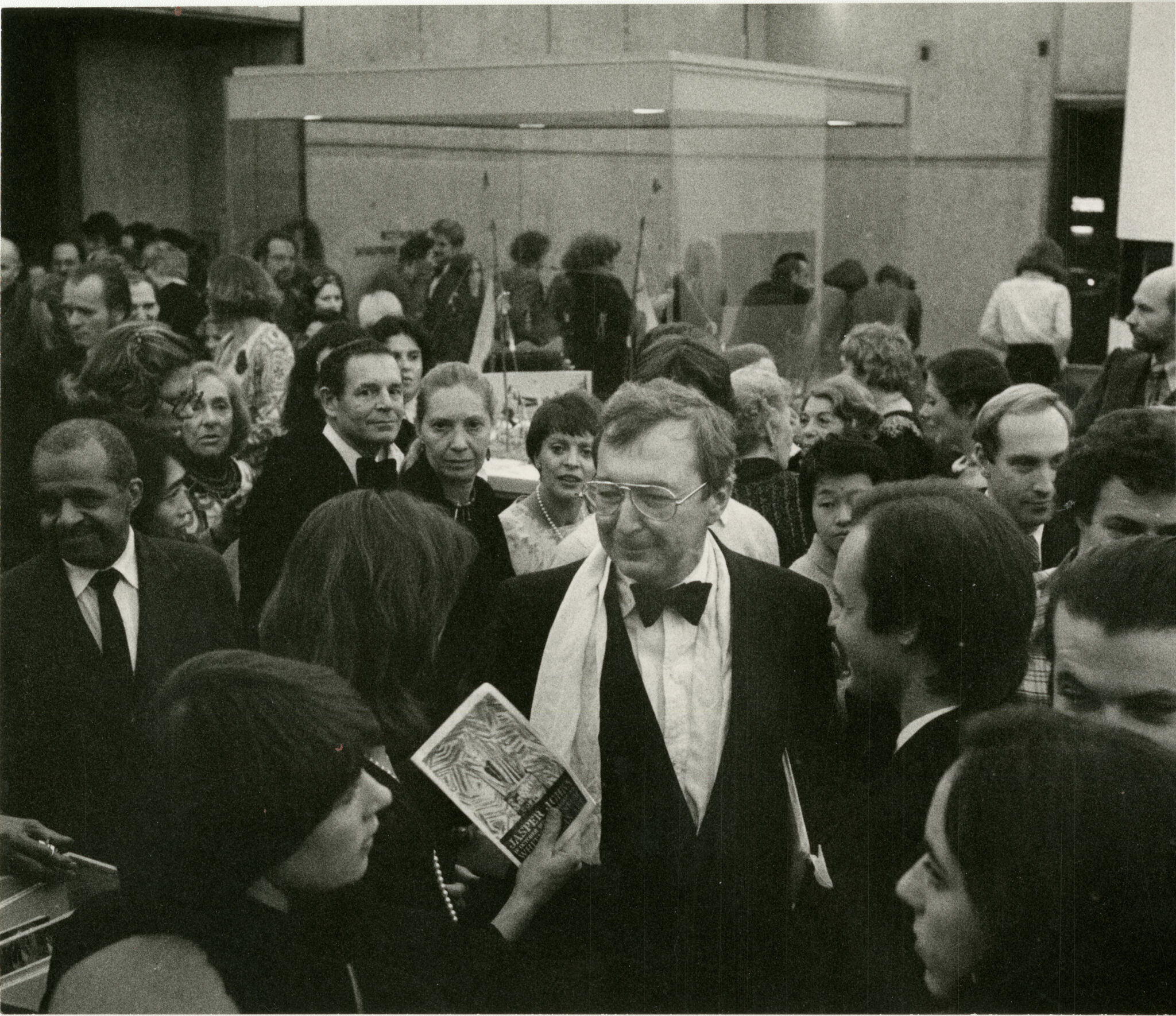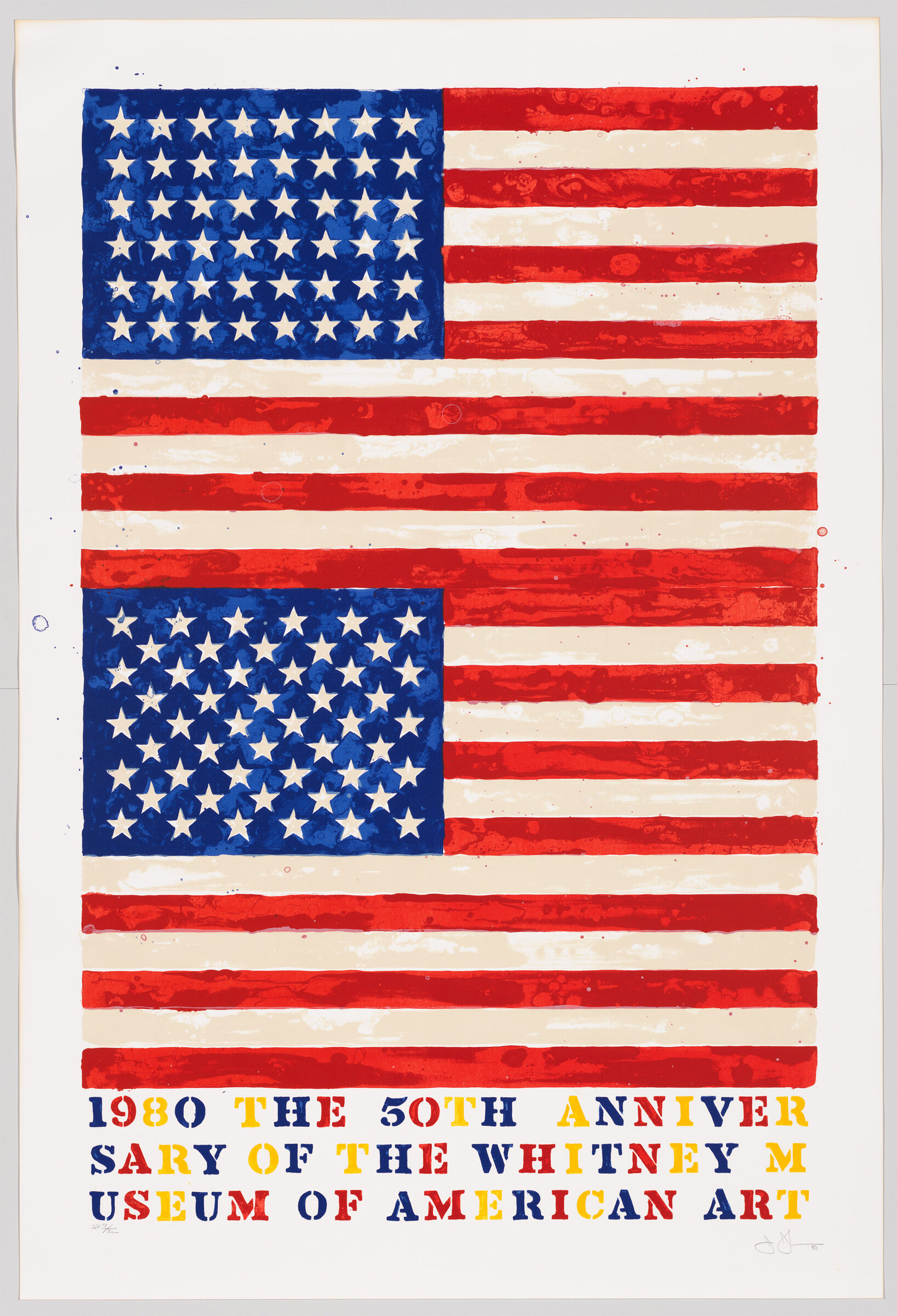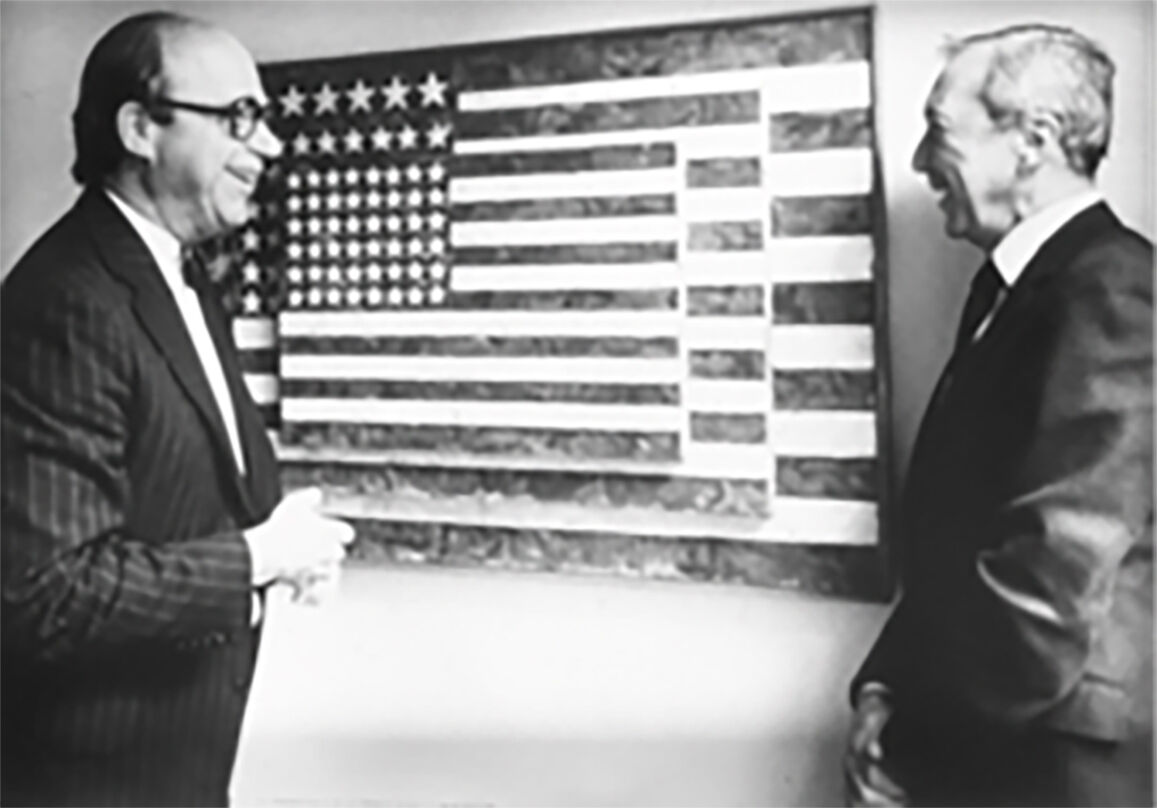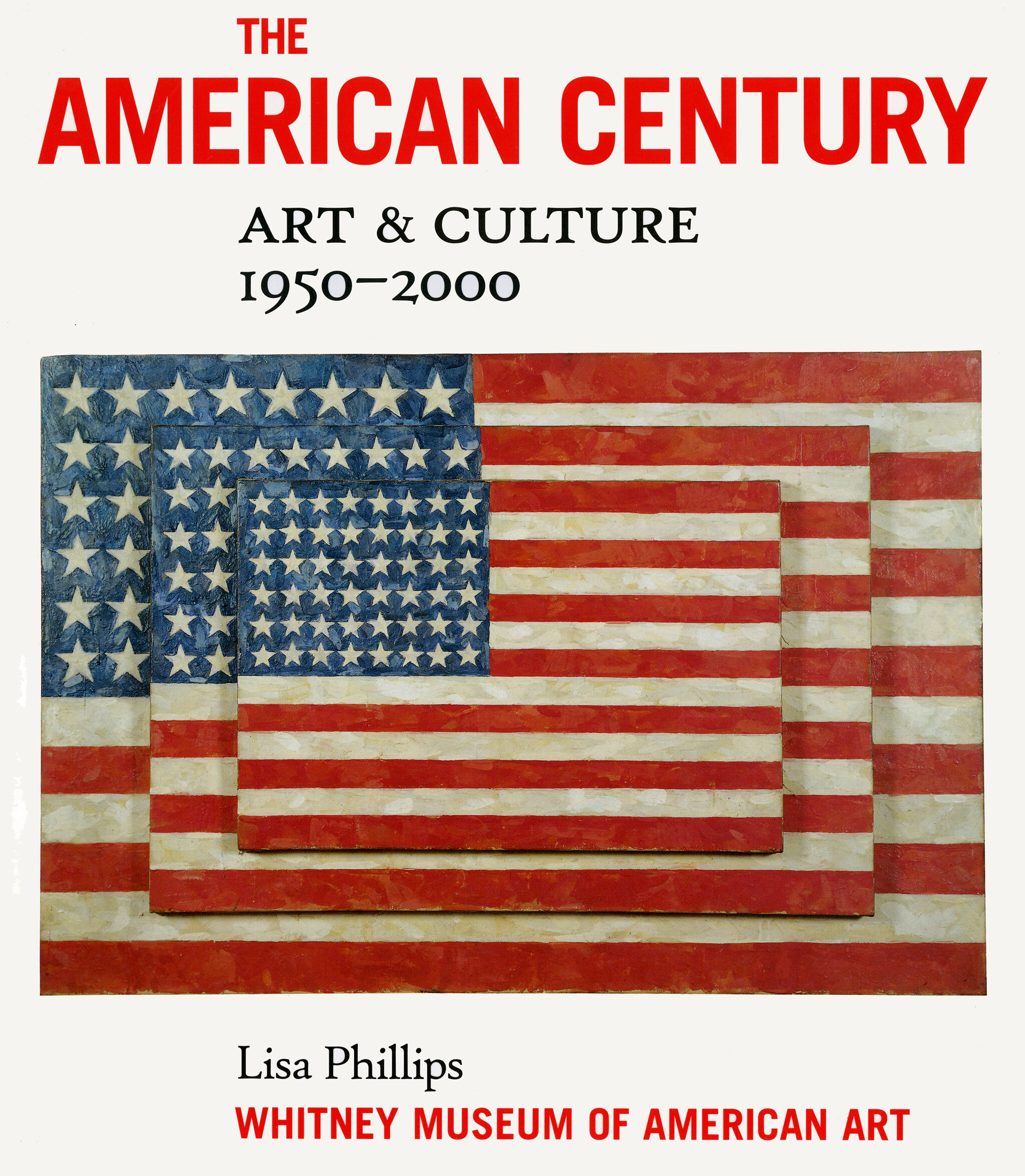Jasper Johns: Mind/Mirror | Art & Artists
Sept 29, 2021–Feb 13, 2022
Jasper Johns: Mind/Mirror | Art & Artists
Jasper Johns and the Whitney
13
Jasper Johns has a long and close history with the Whitney, which was founded in 1930, the year he was born. He is one of the only artists alive to have visited all four of its locations: its original home in Greenwich Village, its sites in Midtown and on Madison Avenue, and its current home on Gansevoort Street. He first attended the Museum as a teenager in 1949, when he encountered the art of Jackson Pollock and Isamu Noguchi. A decade later, he appeared in the 1959 Annual Exhibition of Contemporary American Painting, a survey of recent art that would later come to be known as the Whitney Biennial. Since then he has participated in more than sixty Whitney exhibitions, and the Museum has collected more than 220 of his works, dating from 1957 to today, many of which are on view in the current retrospective here and in Philadelphia.
This gallery presents a chronological selection of archival materials related to Johns’s relationship with the Whitney. The story it tells is as much about people as it is about an institution. They include the curators, writers, patrons, and members of the staff and public who have collected, exhibited, studied, cared for, and viewed Johns’s work over the past sixty years. Rather than providing a comprehensive history, the artworks and ephemera on view here offer glimpses of an intimate, multifaceted, and ongoing rapport between the artist and Museum.
Although Johns first exhibited his work at the Whitney in 1959, it was not until 1966 that it entered the collection with the purchase of Studio (1964). As was customary at the time—and remains so today—he provided technical information about the painting for the Museum’s records. The acquisition was soon followed by Johns’s gift of ten of his prints, which formed the basis for the Whitney’s now extensive holdings of over 190 of his graphic works. In 1969 Johns, along with many artists in the Museum’s Annual Exhibition of Contemporary American Painting, requested that the Whitney offer free admission one day per week. By doing so, he joined a long lineage of artists demanding changes to the Museum’s policies, which continues to this day.
In 1975, the Whitney’s then director, Thomas Armstrong, invited Johns to present his first New York museum survey since one staged in 1964 at the Jewish Museum. The exhibition was curated by Johns’s friend David Whitney at the Museum’s location on Madison Avenue. Michael Crichton, now best known for science fiction novels including The Andromeda Strain (1969) and Jurassic Park (1990), authored the catalogue, the cover of which Johns designed along with the show’s poster. Fellow artists Robert Rauschenberg and Andy Warhol lent works from their personal collections to the retrospective, which Newsweek heralded on its cover by declaring Johns “Super Artist.”
In 1980, the Whitney purchased Johns’s iconic painting Three Flags (1958) from the collection of Burton and Emily Tremaine through New York’s Pace Gallery. The price of one million dollars was thought to be the highest sum ever paid for the work of a living artist, garnering a front-page article in The New York Times. The Whitney celebrated its acquisition by presenting the painting in a one-week show in its lobby gallery and has since exhibited the work in dozens of collection displays, including the inaugural exhibition in its current building on Gansevoort Street.
Johns’s relationship with the Whitney deepened throughout the 1980s and 1990s, as the Museum collected and presented more of his work in landmark exhibitions of his drawings and Savarin monotypes. He designed a poster commemorating the Museum’s fiftieth anniversary in 1980 at the invitation of its then director, Thomas Armstrong, and board of trustees president at the time, Flora Miller Biddle, granddaughter of founder Gertrude Vanderbilt Whitney. Their intimacy is evident in her daughter Fiona Donovan’s scrapbook, picturing an Easter egg hunt also attended by painter Cy Twombly at Mrs. Whitney’s former studio on Long Island. Trial proofs of the anniversary poster hang overhead, revealing the intricacy of Johns’s process, as well as his wit. The two flags feature forty-eight and fifty stars, the number of states, respectively, at the time of the Whitney’s founding and its fiftieth anniversary.
In the twenty-first century, Johns has continued to play an important role in the Whitney’s history. Three Flags (1958) graced the cover of the catalogue for the landmark exhibition The American Century: Art and Culture, 1900–2000, and he donated a new painting to a sale of works benefiting the construction of the Museum’s current home. Throughout this time, Leonard Lauder, now the chairman emeritus of the Whitney’s board of trustees, enhanced the collection with gifts of important examples of Johns’s work. When the present retrospective, originally intended to celebrate the artist’s ninetieth birthday, had to be postponed due to the COVID-19 pandemic, Lauder and the Whitney sent Johns a cake in the form of Painted Bronze (1960); the sculpture is a recent gift of Lauder’s to the Whitney’s collection.

